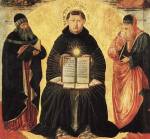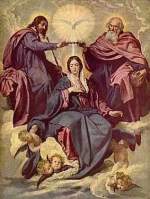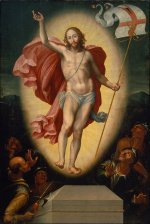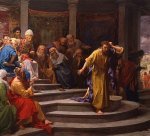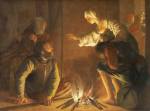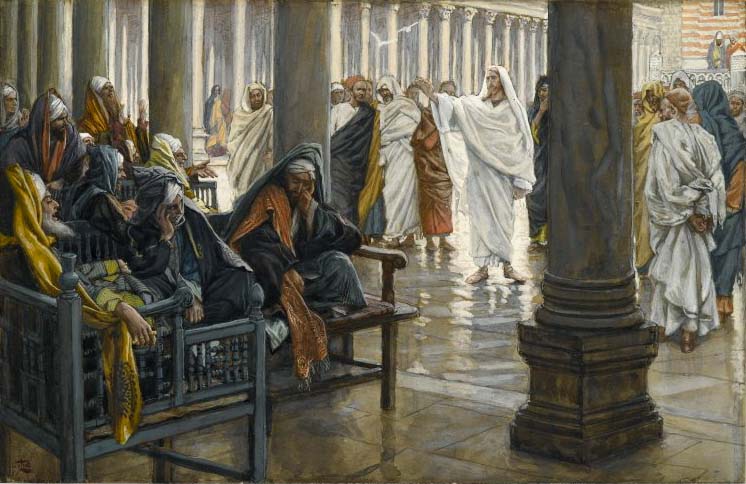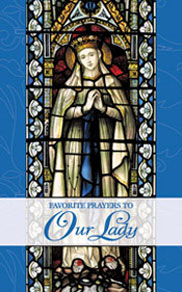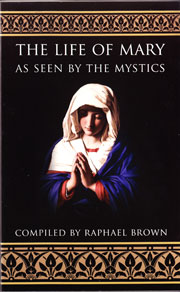THE HAIL MARY
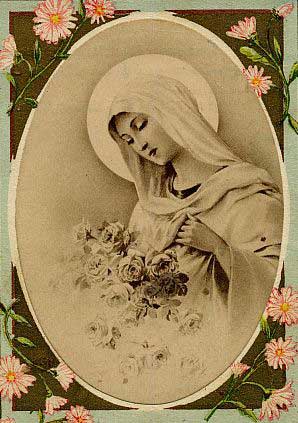
THE FIVE FIRST SATURDAYS IS A DEVOTION NEEDED NOW MORE THAN EVER! FIND OUT MORE HERE
THE SAINT MICHAEL PRAYER AND THE ROSARY
ARE ALSO POWERFUL PRAYERS TO HELP US THROUGH THESE VERY TURBULENT TIMES!
READ ABOUT (AND JOIN IN PRAYING!)
CARDINAL BURKE'S 9 MONTH NOVENA HERE
THIS WEB PAGE IS ALSO AVAILABLE
AS A PODCAST HERE.
The Hail Mary, sometimes called the “angelic salutation,” is the foundation for such famous prayers such as the Rosary and the Angelus. It has inspired much fervent devotion to Jesus and His Blessed Mother.
This wonderful prayer has helped give people the graces, strength, and spiritual protection they’ve needed for hundreds of years.
The Hail Mary has also been the inspiration for some great musical settings of its text in Latin, most famously in the Ave Maria by Franz Schubert. It is as simple as it is elegant, in any language:
Hail Mary, full of grace,
The Lord is with Thee;
Blessed art thou among women,
And blessed is the fruit of thy womb, Jesus.
Holy Mary, Mother of God,
Pray for us sinners,
Now and at the hour of our death. Amen.
Blessed Alan de la Roche, a great champion of the Rosary in the 15th century, once said that “When I say Hail Mary, hope is made strong in my breast and the dew of consolation falls on my soul….the angelic salutation is a rainbow in the heavens, a sign of the mercy and grace God has given to the world.”
He also noted that “as all heaven rejoices when the ‘Hail Mary’ is said, so also do the devils tremble and take flight.”
The first part of the Hail Mary (lines 1-4) comes from passages in Luke’s gospel relating to the first two Joyful Mysteries of the Rosary, the Annunication (from Luke 1:28) and the Visitation (from Luke 1:42). The first two lines recall the Archangel Gabriel’s greeting to Mary before he told her that God had chosen her to be the Mother of His Son, Our Lord Jesus Christ!
Her famous response was “Behold the handmaid of the Lord; be it done to me according to thy word,” (Luke 1:38) in joyful agreement with the Divine request. Because of that, as we read in John’s Gospel (John 1:14), “the Word was made flesh and dwelt among us.”
Mary was the perfect choice to be the Mother of God in that, although she was human just like the rest of us, she was nonetheless conceived without the stain of original sin (in what we refer to as the dogma of the Immaculate Conception). (She had that in common only with her Son!) She was, in the words of the Baltimore Catechism “without any sin and gifted with every virtue.”
Mary was totally devoted to doing God’s will with great love and humility. Let us remember she was always there for her Divine Son, from the blessed beginning of His life on earth to its bitter end when she stood at the foot of His cross at the Crucifixion, when he gave up His life for us.
We do not worship Mary but we honor her in praying the Hail Mary for her crucial role in making our salvation possible. Mary, as St. Irenaeus expressed it, “became the cause of salvation for herself and for the whole human race” in becoming the mother of our Redeemer.
As St. Paul once noted, Jesus is the “one mediator of God and men” (1 Tim 2:5). Still, we can, and should, turn to Mary in prayer, for the graces she gives us come from God. St. Louis De Montfort once referred to the Blessed Mother (as she is also known) as the “treasurer and dispenser of God’s graces.” Thus, it doesn’t hurt for us to get to know her better through prayer!
Again, praying the Hail Mary or showing our devotion to her doesn’t mean we are putting her ahead of Jesus, as some might fear. When we pray to Mary we are also praying through Mary, asking her to intercede with God for us on our behalf.
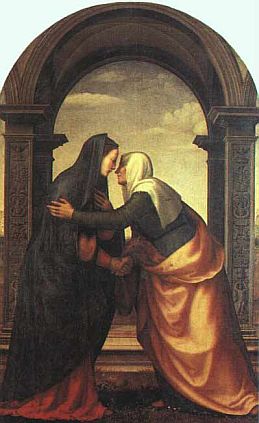
The words in Line 3 of the Hail Mary, “Blessed art thou among women,” come up again a little later in Luke’s Gospel (1:42) as her cousin Elizabeth’s greeting to her in the Rosary mystery of the Visitation, depicted in the famous painting by the Italian Renaissance painter Mariotto Albertinelli at right.
Mary, always willing to be of service, went to visit and help her cousin Elizabeth, who was then pregnant with John the Baptist.
We can admire Mary’s devotion
(as well as her stamina!) in setting out on what must have been an arduous journey to go from Nazareth, where she lived, to a town in Judah where her cousin lived, about 70 miles away.
(Remember, this was in an era when she couldn’t just hop in a car or a bus to get there!)
Luke tells us that when Elizabeth heard Mary’s greeting she cried out joyfully (inspired by the Holy Spirit) “Blessed art thou among women and blessed is the fruit of thy womb!” Mary was indeed blessed because she was born without sin, and was chosen by God to be the Mother of His Son. As she herself put it, showing her gratitude, “He who is mighty has done great things for me” (Luke 1:49).
The tone of the second part of the Hail Mary (see lines 5-7 above) shifts from one of praise for her to one of petition for us. As a side note, Mary was first referred to as the “Mother of God” as early as the third century AD. This title for her was formally adopted at the Church’s Council of Ephesus in 431 AD.
The phrase “pray for us sinners now and at the hour of our death, Amen” was proclaimed at the Council of Trent in the 16th century to have come from the Church itself. The reference to “us sinners” essentially reminds us of our need to be humble and contrite before God.
“The hour of our death” refers to that most delicate moment for our souls. We must persevere in prayer and obedience to God for our salvation as much as possible right up until then. We welcome Mary’s help here to “light our path through the valley of the shadow of death,” as St. Louis De Montfort put it.
As De Montfort continues most poetically in his famous 18th century book The Secret of the Rosary,“Please Mother, lead us to thy Son’s Judgment Seat and do not forsake us there. Intercede for us and ask thy son to forgive us and let us into the ranks of the blessed.” The Hail Mary is indeed a prayer to help us on our path to Eternal Life with God both “now and at the Hour of our death.” Amen!
FROM OUR BOOK AND GIFT STORE
OR CAFE PRESS STORE!
22
Return from the Hail Mary
to How To Say The Rosary
Return from the Hail Mary
to Catholic Daily Prayers

Two Great Prayer Resources Available in our Web Store!
(Click on each book below for more information.)


